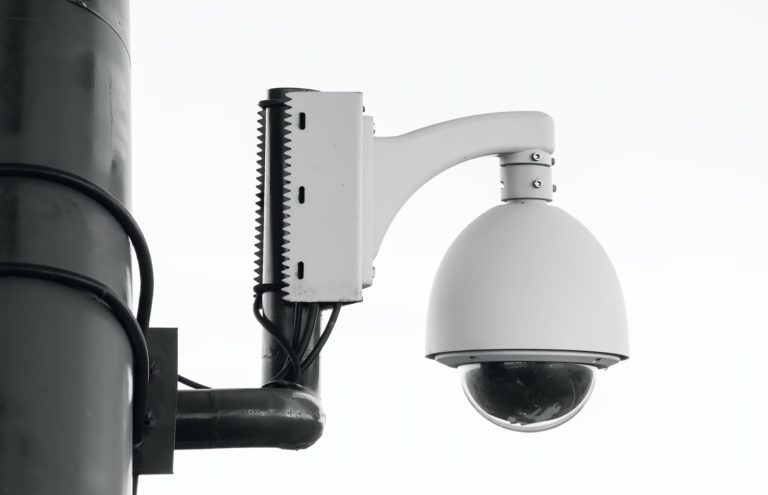The security industry is constantly evolving, driven by technological advancements and changing regulations. As we move further into 2023, there are several emerging trends that are shaping the landscape of security. In this article, we will explore the top 5 trends that are poised to make a significant impact on the industry.
New Technologies Emerge as Privacy Regulations Evolve
Privacy regulations have been a hot topic in recent years, with governments implementing stricter rules to protect individuals’ data. In response to these regulations, new technologies are emerging that help organizations navigate the complexities of compliance while still ensuring robust security measures. One such technology is encryption, which helps protect sensitive data by converting it into a code that can only be accessed by authorized parties. Additionally, biometric authentication methods, such as fingerprint or facial recognition, are becoming more prevalent to enhance security without compromising privacy.
As privacy regulations continue to evolve, organizations are increasingly turning to encryption as a fundamental tool to safeguard sensitive information. Encryption algorithms, such as Advanced Encryption Standard (AES), are used to convert data into an unreadable format, making it virtually impossible for unauthorized individuals to decipher. This technology not only protects data at rest but also during transmission, ensuring end-to-end security.
Furthermore, encryption can be applied to various types of data, including personally identifiable information (PII) and financial records. By encrypting this data, organizations can mitigate the risk of data breaches and unauthorized access, as even if the data is compromised, it remains unreadable without the encryption key. This provides an additional layer of protection, giving individuals peace of mind that their personal information is secure.
In addition to encryption, biometric authentication methods are gaining traction as an effective way to enhance security while respecting privacy. Biometric authentication relies on unique physical or behavioral characteristics, such as fingerprints or facial features, to verify an individual’s identity. Unlike traditional password-based authentication, biometrics cannot be easily replicated or stolen, making it a more secure option.
Facial recognition technology, in particular, has seen significant advancements in recent years. It uses artificial intelligence algorithms to analyze and compare facial features, allowing for quick and accurate identification. This technology is being widely adopted in various industries, including banking, healthcare, and law enforcement, as it offers a convenient and secure way to verify individuals’ identities.
While encryption and biometric authentication technologies provide robust security measures, organizations must also ensure compliance with privacy regulations. This includes implementing proper data governance practices, conducting regular audits, and maintaining transparency with individuals regarding the collection and use of their data.
As privacy regulations continue to evolve, organizations will need to stay abreast of the latest technologies and best practices to protect individuals’ data. By leveraging encryption and biometric authentication, organizations can not only comply with regulations but also build trust with their customers by demonstrating a commitment to privacy and security.
The Rise of Augmented Reality (AR) in Security Applications
Augmented Reality (AR) is no longer just a futuristic concept; it is now being integrated into various security applications. AR technology allows security professionals to visualize threat scenarios in real-time, providing them with valuable insights to make informed decisions more effectively. For example, AR glasses can provide security personnel with live video feeds, real-time data, and overlays of critical information, helping them identify potential threats and respond promptly. This integration of AR into security workflows is revolutionizing the industry, enabling enhanced situational awareness and improving overall response capabilities.
One of the key benefits of AR in security applications is its ability to enhance situational awareness. By overlaying digital information onto the real world, security professionals can have a comprehensive view of their surroundings, allowing them to quickly identify potential threats and take appropriate action. For instance, imagine a security guard patrolling a large facility wearing AR glasses. As they walk through the premises, the glasses provide them with real-time video feeds from surveillance cameras, highlighting any suspicious activities or individuals. This immediate access to critical information enables security personnel to respond swiftly and effectively, minimizing the risk of security breaches.
Moreover, the integration of AR into security applications also improves the overall response capabilities of security teams. With AR technology, security professionals can receive real-time updates and alerts, ensuring that they are always up to date with the latest information. For example, in a high-security event, AR glasses can display live feeds from various sensors and detectors, such as motion sensors or fire alarms. This allows security personnel to quickly assess the situation and allocate resources accordingly. Additionally, AR can provide step-by-step instructions or guidance to security personnel, ensuring that they follow the correct protocols in emergency situations.
AR technology is not limited to just visual enhancements; it can also provide auditory cues to enhance security operations. For instance, AR glasses can be equipped with audio sensors that can detect and analyze sounds in the environment. This can be particularly useful in crowded areas or during large-scale events where security personnel may struggle to identify specific sounds or voices. By leveraging AR technology, security professionals can receive real-time audio cues, alerting them to potential threats or suspicious activities that may require immediate attention.
Furthermore, the integration of AR into security applications has the potential to improve training and simulation exercises. With AR technology, security personnel can participate in realistic virtual scenarios that mimic real-world situations. This allows them to practice their response strategies and decision-making skills in a controlled environment, without the risk of actual harm. By simulating various threat scenarios, security teams can identify any weaknesses in their protocols or procedures and make necessary improvements. This proactive approach to training can significantly enhance the preparedness and effectiveness of security personnel in real-life situations.
In conclusion, the rise of Augmented Reality (AR) in security applications is transforming the industry by providing security professionals with enhanced situational awareness, improved response capabilities, and realistic training opportunities. As AR technology continues to evolve, we can expect to see even more innovative applications in the field of security, further revolutionizing the way security operations are conducted.
Proactive Security Measures: A Growing Focus for Organizations
Gone are the days when organizations solely relied on reactive security measures. In 2023, there is a growing emphasis on proactive security measures to identify and mitigate potential risks before they materialize into full-blown incidents. This shift is driven by the realization that prevention is more cost-effective than remediation. Organizations are increasingly leveraging advanced threat intelligence platforms that use machine learning algorithms to analyze vast amounts of data and identify potential vulnerabilities. By proactively addressing security gaps, organizations can stay one step ahead of cybercriminals and significantly reduce the likelihood of breaches.
One of the key aspects of proactive security measures is the implementation of robust access controls. Organizations are now adopting multi-factor authentication methods to ensure that only authorized individuals can access sensitive data and systems. This includes the use of biometric authentication, such as fingerprint or facial recognition, in addition to traditional username and password combinations. By implementing these advanced access controls, organizations can minimize the risk of unauthorized access and protect their valuable assets.
Furthermore, organizations are investing in regular security audits and assessments to identify potential vulnerabilities in their systems and networks. These audits involve comprehensive testing of the organization’s infrastructure, applications, and processes to uncover any weaknesses that could be exploited by malicious actors. By conducting these audits on a regular basis, organizations can proactively address any vulnerabilities and strengthen their overall security posture.
Another proactive security measure gaining traction is the implementation of employee training programs. Organizations are realizing that their employees can be both their greatest asset and their biggest vulnerability when it comes to cybersecurity. By providing comprehensive training on best practices for data protection, recognizing phishing attempts, and maintaining strong passwords, organizations can empower their employees to be the first line of defense against cyber threats. Regular training sessions and simulated phishing exercises can help employees stay vigilant and ensure that they are equipped to identify and report any suspicious activities.
Moreover, organizations are increasingly collaborating with external security experts and participating in information sharing initiatives. By sharing threat intelligence and collaborating with industry peers, organizations can gain valuable insights into emerging threats and trends. This collaborative approach allows organizations to proactively adapt their security measures to address new and evolving risks. Additionally, organizations are also engaging with government agencies and law enforcement to stay updated on the latest cybersecurity regulations and to report any incidents promptly.
In conclusion, the shift towards proactive security measures is a necessary response to the ever-evolving threat landscape. By implementing robust access controls, conducting regular security audits, providing employee training, and engaging in information sharing initiatives, organizations can enhance their ability to detect and prevent cyber threats. Proactive security measures not only reduce the risk of breaches but also demonstrate a commitment to safeguarding sensitive data and maintaining the trust of customers and stakeholders.
How Supply Chain Dynamics Are Reshaping Product Selection in Security
Supply chain dynamics play a crucial role in the security industry, driving changes in product selection. As organizations become more interconnected, security risks extend beyond their own networks and systems. Third-party vendors and partners can introduce significant vulnerabilities that cybercriminals exploit. To address this, organizations are now incorporating supply chain risk management into their security strategies. They are not only evaluating the security posture of their own systems but also conducting thorough assessments of the vendors they work with. This shift in focus has led to greater scrutiny of product selection, with organizations opting for solutions that have robust security measures built-in.
Data Analytics Surge: Transforming Security Strategies in 2023
Data analytics is transforming the way security strategies are developed and implemented in 2023. The sheer volume of data generated by modern organizations can be overwhelming, but with advanced analytics tools, it can be harnessed to enhance security. Predictive analytics, for instance, uses historical data to identify patterns and predict potential threats before they occur. Similarly, behavioral analytics analyzes user behavior to detect anomalies that may indicate a security breach. These analytical tools provide security professionals with valuable insights to make data-driven decisions, thereby bolstering overall security posture.
In conclusion, the security industry is undergoing significant changes in 2023. Privacy regulations are driving the emergence of new technologies, while the integration of AR is revolutionizing security applications. Organizations are shifting towards proactive security measures, incorporating supply chain risk management into their strategies, and leveraging data analytics to enhance security decision-making. As we embrace these emerging trends, the security industry is poised to become more resilient and efficient in countering evolving threats.






